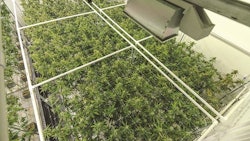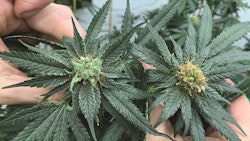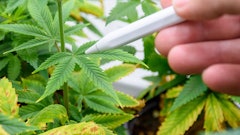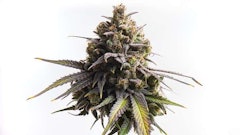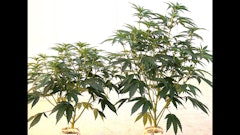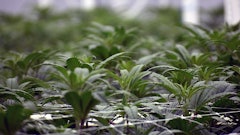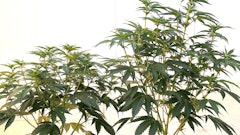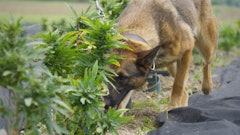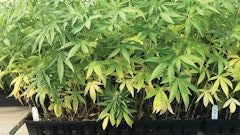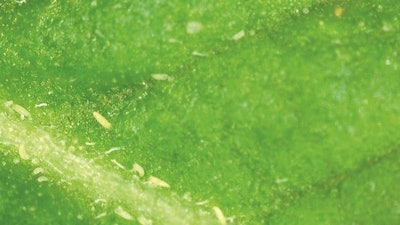

A well-researched and detailed integrated pest management (IPM) plan is fundamental to running a productive cannabis cultivation operation. Your IPM standard operating procedure documents, or SOPs, should show a thorough, carefully planned strategy that provides a comprehensive understanding of how to prevent and curtail pest outbreaks. The principal goal is preventing pests from establishing populations that can cause significant crop loss.
For 15 years, I operated a regenerative vegetable and hops farm for Great Lakes Brewing Company based in Cleveland, Ohio. Running more than 30 different fruits and vegetables annually allowed me to learn about a wide range of pests, many of which are also problematic in cannabis. In the greenhouse and field, battling everything from aphids and blights to groundhogs, I found certain practices gave me consistently high yields of the highest quality. These methods centered around tracking data, predicting outbreaks, and employing preventive strategies. These are the foundations of a good IPM plan.
Plan for the Worst
Analyze your growing situation and predict your biggest concerns. Field crops have myriad pest threats, but nature brings balance with helpful native predator populations. Don’t underestimate the value of these predators and be sure any approved pesticide applications are targeted for specific pests. Observe weather trends in your area, and consider not just climate conditions, but regional threats like wildfires, hurricanes, and floods, which can affect pest populations and shift them from their usual routes and habits. Talk with other farmers in the area to learn more about specific pest pressures.
Indoor grows may be more protected from certain elements, but they are in no way immune to pest and disease problems. Indoor and greenhouse grows can provide a more ideal growing environment for plants, but also for pests. Populations can grow fast and fierce, and without a winter season, pest lifecycles can be extended. Figure out the risk factors associated with pest infiltration points (doors, vents, improperly sealed joints, etc.). Develop strategies to keep staff and visitors from walking pests into your grow.
In the planning stage, make a commitment to what type of pesticide program is most effective and the healthiest for your staff, customers, and community. Keep in mind that organic doesn’t necessarily equate to higher pesticide cost (although it can). Consult your state’s regulations on pesticide use, disclosure, and disposal to ensure your plan is compliant with both cannabis and agricultural regulations.
Brush up on skills for creating effective SOP documents. Focus on consistent formatting, a clear and active voice, brief, simple instructions, and ease of repeatability. Consider necessary notation, potential problem assessment, and figuring out which metrics may be used to check efficiency and quality. Decide on your format, identify your audience, and define the end goal of each individual document. Simple steps work well for many IPM SOPs, but procedures that involve decision-making may require hierarchal formats, or possibly flowcharts that detail the chain of command and how final calls are made.
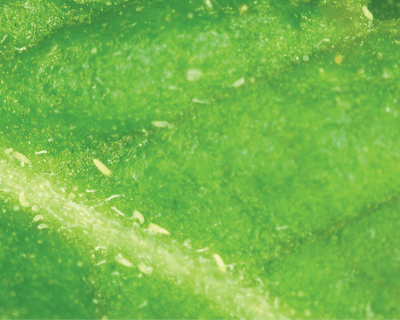
Implementing IPM Strategies
Once you have done your research, it's time to lay the groundwork. Prevention of large outbreaks is your primary goal. Identification, containment, and treatment follow. Now you can begin to scratch out the details.
A good place to start is with sanitation and hygiene. At Ohio-based cannabis cultivator Galenas, street clothes stay in our lockers, and we change into clean scrubs daily. Our Crocs and headwear stay at the grow, and we are always gloved and masked (this was even before the COVID-19 pandemic). Step-in bleach trays and glove and bootie changes between rooms can minimize pest movement. Encourage regular handwashing and address the threat associated with smoking and tobacco mosaic virus. (TMV can be transferred to plants by touch after cigarette smoking.)
Consider having dedicated workers for your various rooms. Propagation should always be your cleanest room, as cuttings are easy to inspect and treat if any pests are present. A mother room generally holds the highest risk for pest problems based upon plant age, as pest resistance is lowered over time, and the plants become more prone to infection. If workers are moving between rooms, set up an order of operations, working in prop to veg to flower, and ending your day in mom. Weigh the risk of permitting your employees to operate home grows, as they can bring in and be sources of cannabis specific pests and disease.
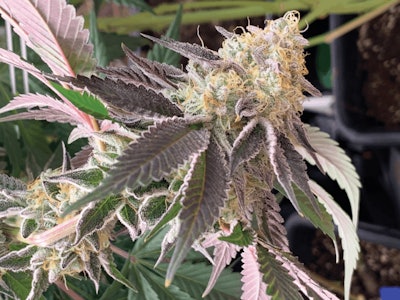
Next, address scouting and identification. Good scouting protocols and skilled scouts have enormous value. Decide how many hours of scouting will be necessary for your operation’s scale. At Galenas, we have 1,500-square-foot regulated rooms, and we farm vertically on three tiers. We have our full cultivation team conduct daily crop inspections each morning, and a dedicated scout spends half of a workday weekly in each room, looking more in-depth. Overall, at least 10 labor hours per week are spent on pest scouting.
Incorporate into your protocol exactly how the scouting will be performed. Provide your scouts with hand lenses for quick sweeps and microscope cameras for finding extremely small pests like hemp russet mites, as well as pest eggs. Brush scouting is an important part of IPM, which involves shaking branches over a white or black card (or a piece of paper attached to a clipboard) to watch and count what falls off the plant. Your scouts should document the percent of canopy afflicted, as this is vital information to guide your next steps.
Your scouts and cultivation technicians need clear, updated education on pest identification, preferred conditions, and which locations on the plant they should most closely monitor. For example, hemp russet mites often congregate on tender, growing tips, particularly in early flower, so scanning these areas can often guide a scout toward an infected area quickly. Scout roots, as well, to catch pests such as rice root aphids (scouts can invert a plant in a small container to inspect for root disease). Train your staff on how to identify insect and mite eggs, and how the damages from pests can present. Adult mites are distinguishable from insects as they have eight legs and no antennae. In your SOP document, highlight how to identify individual predators, as well as the presentation of fungal pathogens. Check incoming soil for pests, as well as beneficial predators. Occasionally we find helpful rove beetles on incoming soil.
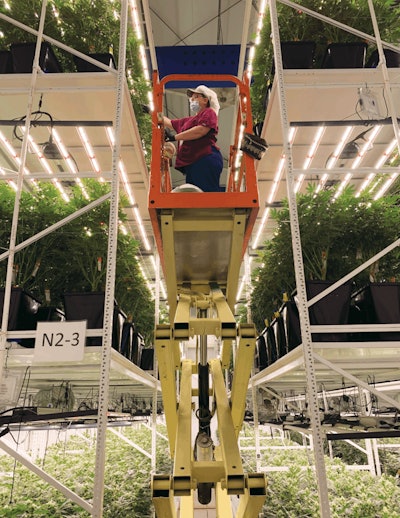
Catch and Don’t Release
IPM also involves a detailed trapping and monitoring strategy. In enclosed spaces, yellow sticky cards can be placed throughout production areas, with proper proximity to target pests. Often overlooked is the propagation room, where monitoring and trapping is critical to avoid spread to production rooms. Have your scouts perform counts and change cards, marking the replacement date on a regular basis (generally weekly). Hang cards near entryways, in your biowaste and soil storage areas, and near ventilation intakes. Accurate reporting of card counts should be databased and analyzed for trends.
Based on your operation’s scale, you may want to have individual SOPs for each pest that you may meet. Fill in details such as reproduction method and frequency, egg type and location, damage presentation, risk of vectoring disease, potential spread rate, and which biological agents or pesticides should be used to mitigate. Incorporate protocols for handling and disposal of contaminated plant material.
Pesticide and Biological Considerations
There are many points to firmly address in your SOPs about pesticide use. Ideal application rates, times, frequencies, mode of application, and re-entry interval (the time you must allow after a pesticide application before an employee can enter the room) are a few fundamental areas to detail. There are helpful smartphone apps with pesticide databases that disclose contents and active ingredients, and others can provide information on pesticide management and applications. Think about the health effect of individual products on plants, as some can cause substantial plant stress or reduce growth. You might need to reapply a pesticide to destroy pest eggs, which have a lower respiration rate, but be sure to follow directions on the label. Rotations may be needed, as pests can develop resistance to certain products. In your SOPs, detail all steps for storage, application, needed personal protective equipment (PPE), and disposal of each product.
When using biological controls, application prior to established pest populations is of utmost importance. When buying predators, use a reputable insectary. If possible, look for companies who have technical knowledge and offer on-site support.
Write SOPs describing predator introduction techniques and how to check and monitor for viability. Understand compatibility; for example, combining apex predatory mites like Amblyseius swirskii and Neoseiulus cucumeris may lower effectiveness, as the mites can compete for territory and spend less time and energy consuming pests. Research and analyze longevity under various environmental conditions. Establish sufficient populations and apply them in the correct area of the canopy or root zone. Veer away from praying mantises and ladybugs, which can be wild-harvested, non-native, and are not used in commercial agriculture.
Finally, when establishing your IPM plan, a good consultant can go a long way. Unfortunately, there are many consultants in cannabis that are making recommendations based on limited knowledge, or taking advantage of a nascent industry, so vet potential consultants well. Ask the right questions. Find out what relationships they have with insectaries and which brands they are using. Look for someone with an entomology background who has worked with other cannabis operators.







